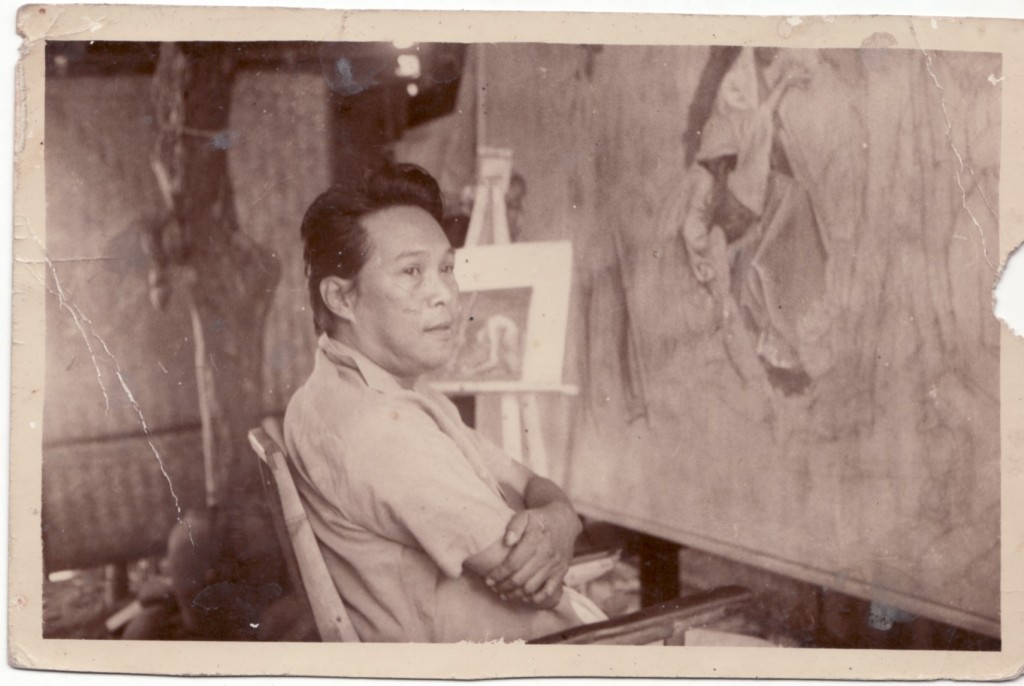
Yesterday This week, I went on a media tour to Angono, Rizal, touted to be the “Art Capital of the Philippines.”
Angono has produced two National Artists, namely Carlos “Botong” Francisco (for visual art) and Lucio San Pedro (for music), and several well-known artists such as Nemiranda, the Blanco family of painters, and Perdigon. In recent years, younger generations of artists have emerged in Angono and art galleries and studios are a familiar sight in this municipality.
The subject of our tour was Angono’s most famous son, Botong Francisco, best known for his sprawling murals (some up to 200 feet!) that are a familiar sight to Filipinos as a lot of them are displayed in prominent institutions. His masterpieces, which depict historical scenes and Filipino communities, include the Malacañang mural “Fiesta”, “Blood Compact” (Yuchengco Museum / RCBC Building), “First Mass at Limasawa” (National Museum), “The Martyrdom of Rizal” (Fort Santiago), and “Stations of the Cross” (Far Eastern University).
Vibal Foundation is coming up with a new addition to its Art Series — a book on Botong entitled The Life and Art of Botong Francisco, edited by art historian Patrick Flores, with essays by D.M. Reyes, Alice Guillermo, Roberto Paulino, and Ino Manalo.
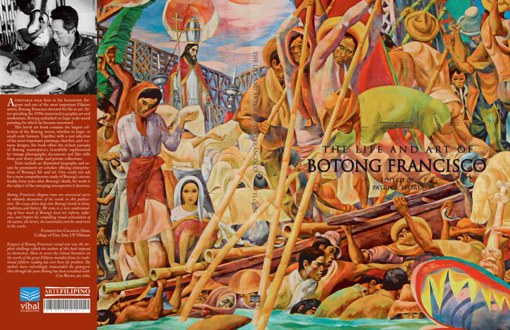
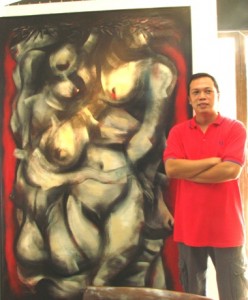
To start off the tour, we went around Botong’s atelier, which was shown to us by Botong’s grandson Carlos Gil “Totong” V. Francisco II (who writes the afterword for the Botong book. His father is Botong’s son, Rodolfo V. Francisco), who has followed in his grandfather’s footsteps as a painter (apparently everyone in the family has the inclination for visual arts), although his works are abstract expressionism. He has his own gallery in Angono.
Botong’s atelier showcases Botong’s personal effects, such as his drafting table, his old footstool, his books, and even a row of shoes. I found out that Botong was an eclectic collector of magazines (including National Geographic magazines), hats, walking sticks, and even wartime artifacts.
Botong’s various awards and recognitions, including his National Artist certificate and medal) are also on display, as well as framed photographs taken by photographer Dick Baldovino.
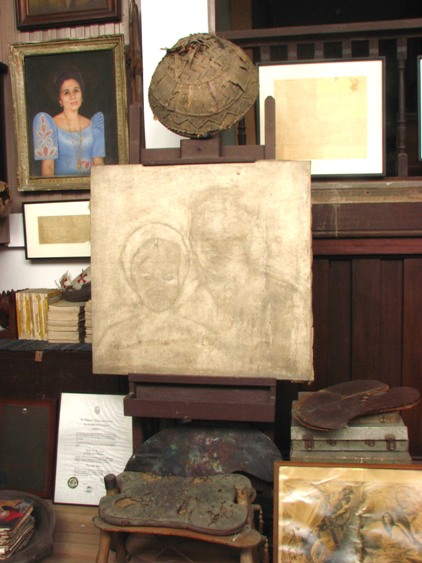
an unfinished canvas on Botong’s easel, wooden palettes and Botong’s footstool
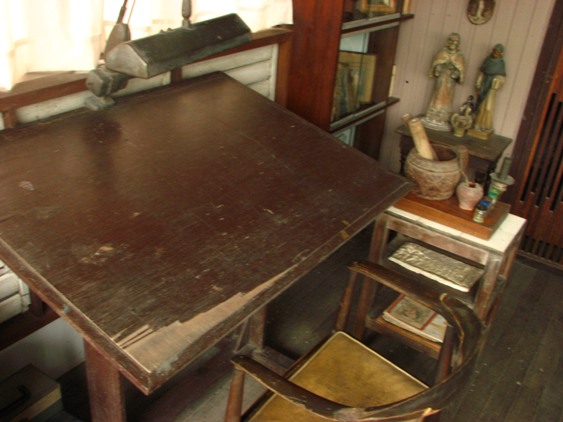
Botong’s drafting table

Botong’s National Geographic collection
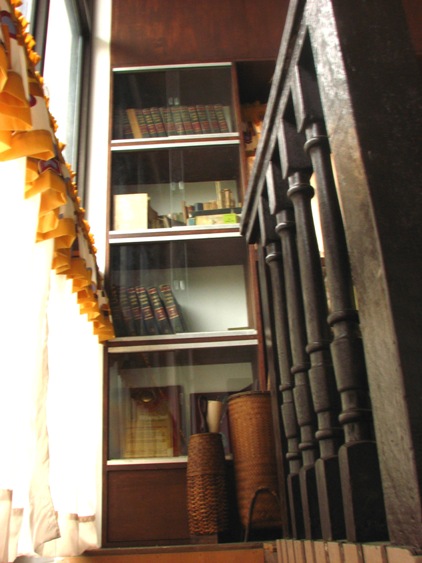
Botong’s bookcase
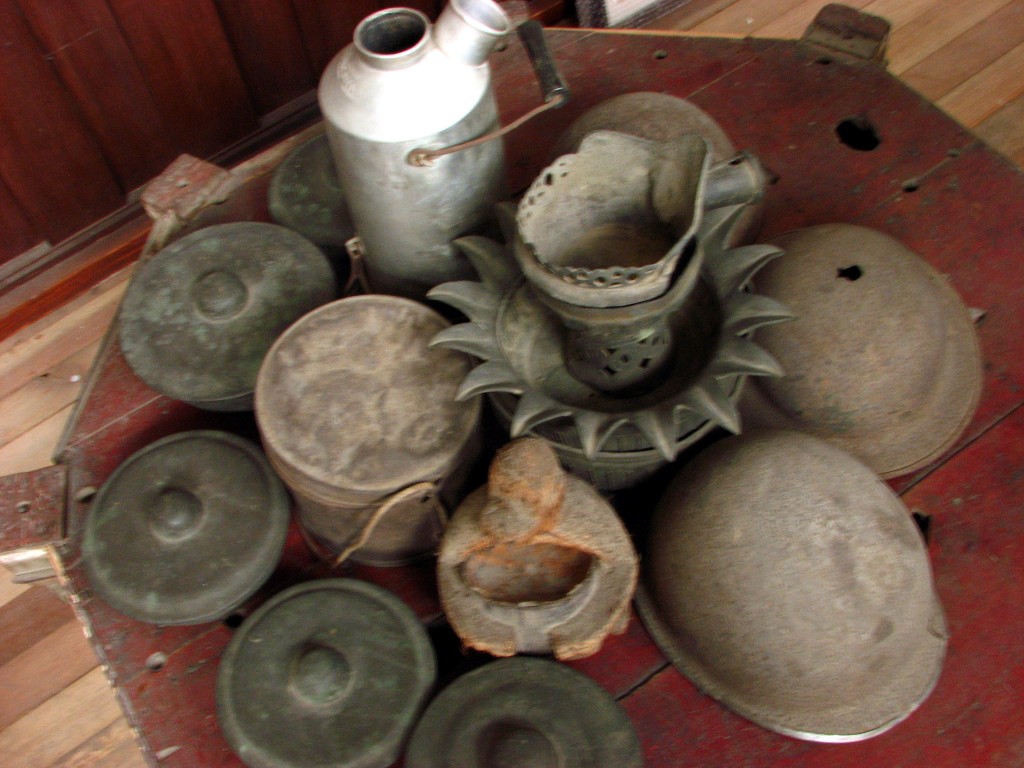
wartime artifacts

Botong’s shoes, size 7
Sadly, since most of Botong’s work was commissioned, there are no works on display at the atelier, just pencil drawings and watercolor studies, and an unfinished canvas.
Botong’s atelier is undergoing renovation in fits and starts because of the lack of funds, as it is being done through the efforts of the family and a little help from the local government. As much as the family would want to get the renovation completed, they are reluctant to share the jurisdiction over Botong’s estate with the national government as they would like to keep the decisions within the family.
I find this really sad as I feel that the family should get the financial support for the construction of the atelier without having to give up their authority on Botong. They’re the family, after all and the decisions should be left up to them. The family is forced by necessity to sell what little is left (with the family) of Botong’s works — the pencil drawings and watercolor studies — to be able to amass funds for the ongoing renovation.
Being the studio of a National Artist, the atelier is a popular stop for schoolchildren on field trips and tourists, free of charge, because the family feels Botong would not have approved of charging people to visit him. I think the national government would do well to fund the siteso (harr, bureaucracy) for the purposes of cultural preservation and as a tribute to the great master.
We then had a hearty lunch at the Balaw-Balaw restaurant, famous for its exotic cuisine and local specialties. I got to try frogs’ legs, and I found out that it really did taste like chicken, albeit stringy and with a slightly bitter aftertaste. I loved the rest of the food, especially the sinampalukang manok, and the humongous platter called minaluto.
After lunch, we had the pleasure of meeting Botong’s apprentice Salvador Juban.
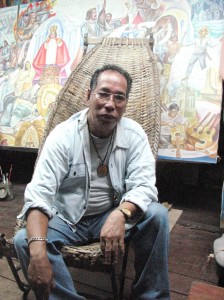
After graduating high school, with college out of the question, Juban had pleaded with Botong to give him art lessons. Seeing his potential, Botong obliged. Juban went on to become Botong’s apprentice in the last years of the painter’s life.
Juban best remembers Botong as a simple and humble man who did not aspire to become a celebrity even at the peak of his career. According to Juban, Botong remained down to earth and approachable, especially to the townsfolk of Angono, who often knocked on his door for designs for the carrozas (carts) used in the processions, or the stage for the local school’s graduation.
Juban regaled us with stories about Botong, bringing to light his gentle personality, including a very interesting anecdote on how Botong was kind to everyone, including animals.
After a particularly bad storm felled a tree in his yard, Botong rescued three chicks from the fallen tree and attempted to warm them on the stove. Juban cautioned him that the chicks might get cooked, so Botong took the three chicks and held them against his chest, inside his shirt, to keep them warm! Despite his efforts, the chicks were too weak to survive, and by nightfall, Juban found Botong crouched in the yard, digging a small grave for his little friends.
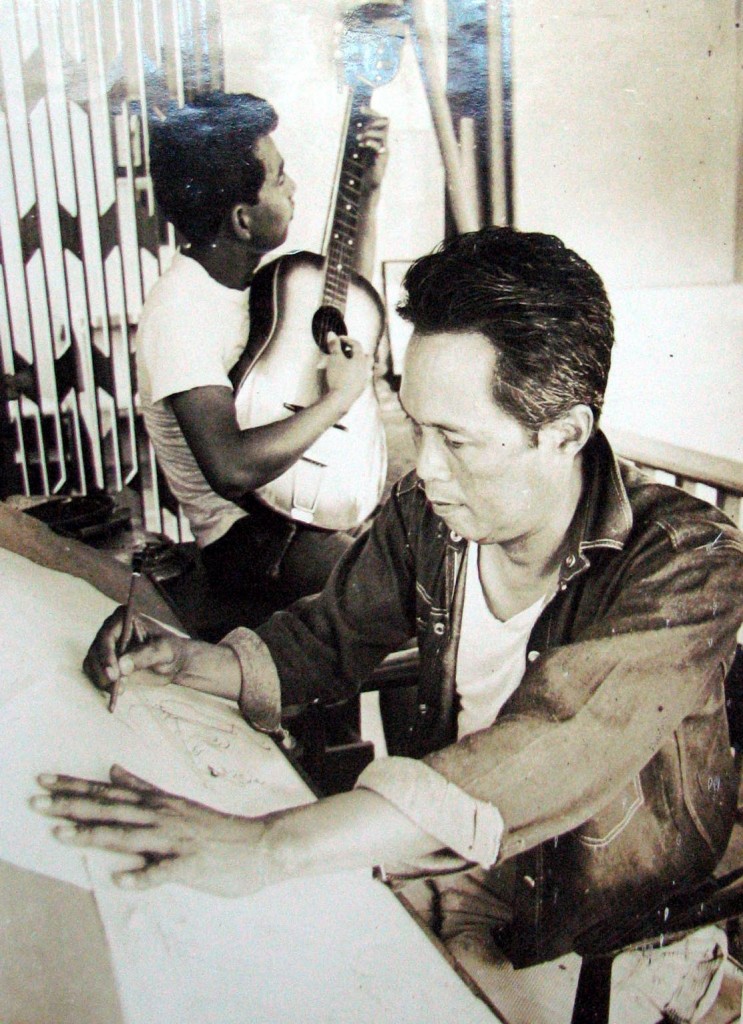
Botong at work on his table while a young Salvador Juban dreamily strums his guitar in the background
I was glad we were able to meet Salvador Juban, who was able to introduce us to Botong the person, and I am even more in awe of Botong than I originally was. To be remembered not just for your masterpieces, but also for the way you touched people’s lives is no small feat, and is an achievement most people can only aspire for.
I can’t wait until the book is launched, it’s shaping up to be a great art book!
The Life and Art of Botong Francisco is set to be launched at the National Museum on Aug. 19, alongside another VFI Art Series title, Francisco V. Coching, which chronicles the milieu of the popular komiks illustrator, also edited by Flores, and accompanied by the full-color republication of Coching’s masterpiece work “El Indio.”
An exhibit, entitled “Telling Modern Time,” accompanies the launch and showcases a focused view of Botong and Coching’s works in the popular context.
The Botong and Coching books follow VFI’s first Art Series release in 2008, Fabian de la Rosa and His Times.
VFI is the non-profit arm of Vibal Publishing House Inc., a company best known for textbooks for students in the elementary and high school levels. VFI specializes in knowledge – the preservation and distribution of as much of it as possible, hence its various print and website projects.

 Lunch at Balaw-Balaw
Lunch at Balaw-Balaw